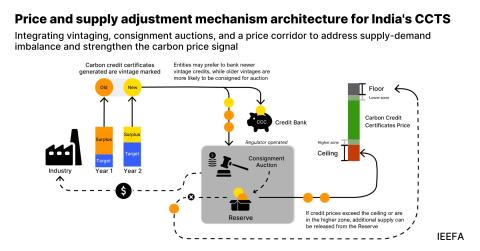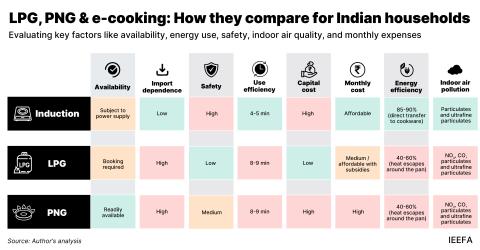Fiscal plan for Puerto Rico’s electricity system edges somewhat closer to reality

Key Findings
The Financial Oversight and Management Board says the Puerto Rico Electricity Power Authority (PREPA) could afford only $2.5 billion of $9 billion in debt.
The new fiscal plan would spend money that PREPA doesn’t have on old debt.
Puerto Rico is pledging future revenues to creditors based on a shaky administrative assumption—it is effectively spending money it does not have and is unlikely to acquire.
Last week, the Financial Oversight and Management Board (FOMB) published its most recent fiscal plan for the Puerto Rico Electricity Power Authority (PREPA). It is clear on one point: Puerto Rico’s electricity system cannot afford more debt.
The plan, which is the document containing the financial projections that underlie any debt restructuring plan, represents a major step forward. The FOMB now recognizes that proposed levels of debt repayment in a December restructuring plan are not sustainable. The board noted that electrical system expenses will be higher and system sales will be lower, contributing to less revenue available for debt service.
Rather than the $5.68 billion in debt repayment proposed in the plan, the FOMB now estimates that Puerto Rico’s electrical system can only afford approximately $2.5 billion in debt. The FOMB intends to file an amended plan in July to reflect the new projections. Yet the FOMB's proposal to pay $2.5 billion to legacy creditors still suffers from major flaws.
1. Lack of capital to meet electrical system needs
The first problem is recognized by the board itself:
“Given the antiquated and fragile nature of PREPA’s infrastructure all incremental revenues generated from rate increases to pay restructured debt could be used to transform PREPA into a modern, efficient, clean utility. The Oversight Board, however, will use the revenues generated by such rate increase to repay creditors.”
The FOMB makes it clear that the money they propose to use for legacy debt repayment could instead be used to bring Puerto Rico’s electrical system up to basic standards of reliability and transform it to renewable energy, but the priority is the repayment of the creditors.
As IEEFA has discussed elsewhere, the estimated costs for the grid transformation are approximately $20 billion. Puerto Rico has been allocated $14 billion in federal funds, leaving a gap of $6 billion. One of the fundamental principles of the bankruptcy process is that it must leave PREPA with the resources needed to provide adequate electrical service. Money should be found to cover this gap before diverting resources to pay legacy creditors.
2. Debt repayment depends on achieving savings from transitioning to renewable energy
The financial projections in the fiscal plan are predicated on PREPA effectively executing a shift from fossil fuels to renewable energy. The fiscal plan assumes that Puerto Rico will achieve 25% renewable energy by 2025 and 87% by 2040. The savings that this transformation would generate form the basis for the assumption that $2.5 billion in new bonds can be issued to legacy creditors and repaid over the next decades.
But there is a critical question: Can PREPA achieve the savings by stepping up efforts to build renewable generation capacity? If the status quo remains—if additional natural gas is added and existing fossil fuel generation units remain in service—then the fiscal goals cannot be achieved.
PREPA’s track record on renewable energy is abysmal.
PREPA’s first attempt at utility-scale solar a decade ago failed, resulting in some of the highest-cost electricity on the Island. The five tranches of renewable energy procurement ordered by the regulatory bureau in 2020 have also been severely delayed, with only one tranche so far resulting in signed contracts. All parties involved—the Puerto Rico Energy Bureau, PREPA and LUMA Energy, the grid operator—have blamed each other. The end result is that no utility-scale renewable energy has been built.
In January 2023, Puerto Rico awarded a 10-year contract for the operation and maintenance of PREPA’s power plants to Genera, a subsidiary of New Fortress Energy (NFE). NFE delivers natural gas and supports the expansion of natural gas infrastructure. NFE made cost savings a centerpiece of its proposal to PREPA. The company has a prior contract with PREPA for the upgrade of the San Juan 5 and 6 power units, and for the delivery of natural gas to the plant. There has been no public report that demonstrates NFE has met its savings goals under the San Juan contract. Nothing in the new contract with Genera provides a financial incentive or penalty to the company based on renewable energy goals.
The fiscal plan also fails to take seriously the ability of rooftop solar to contribute to resiliency and lower costs for the power system, despite the fact that it is the only form of renewable energy rapidly growing on the island. The plan appears to still treat distributed renewable energy as a problem, rather than as a technology that could be incentivized and developed in a manner coordinated with grid improvements to result in overall lower system costs (as shown by the 2021 grid modeling study published by CAMBIO and IEEFA).
Instead, the fiscal plan bets all of its future savings on a rapid transition to utility-scale solar that appears to have a high execution risk, given the recent award of the generation privatization contract to a natural gas company. If PREPA remains highly dependent on fossil fuels, high costs and price volatility will continue to make a balanced budget difficult to achieve. The savings will not materialize.
Puerto Rico is pledging future revenues to creditors based on a shaky administrative assumption. It is spending money it does not have and is unlikely to acquire.
3. Reliance on federal funds for operational expenses
Finally, it is worrisome that the electrical system currently is relying on non-recurring federal funds to meet basic operational needs. The fiscal plan points out at least two ways in which federal funds are being used to cover operational needs of the electrical system over the next couple years.
First, the Federal Emergency Management Agency (FEMA) is funding 90% of the cost of 350 megawatts of emergency natural gas-fired generators (with the natural gas provided by NFE) to supplement the existing unreliable generation system. It is unclear how long the generators will be in place.
Second, grid operator LUMA will be using almost $1 billion in federal funds over the next four years on vegetation management.
With the system apparently in such a state that the Puerto Rico government is relying on federal resources to meet basic operational expenses to keep the lights on, it is unclear how the FOMB arrives at the conclusion that there is money available to pay legacy creditors.
In conclusion, the board has taken a step in the right direction in cutting the proposed debt repayment from $5.68 billion to $2.5 billion. But the journey to stable electric rates, balanced budgets and market access for PREPA is much longer. To achieve this, Puerto Rico needs a new, reliable and rebuilt grid rooted in renewable energy, and that transformation will take every bit of federal funds and any additional new debt for the foreseeable future. The FOMB should not base debt repayment on a transformation that still has not occurred and possibly might not occur. With the system in its current state, there is no room for any legacy debt.
En español: El plan fiscal para el sistema eléctrico de Puerto Rico se acerca un poco más a la realidad



















